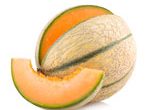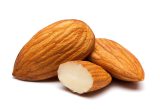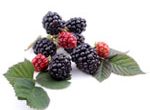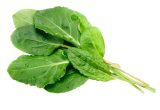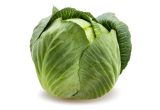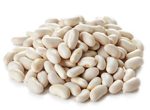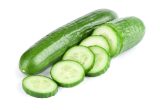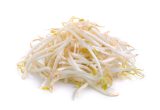Mint

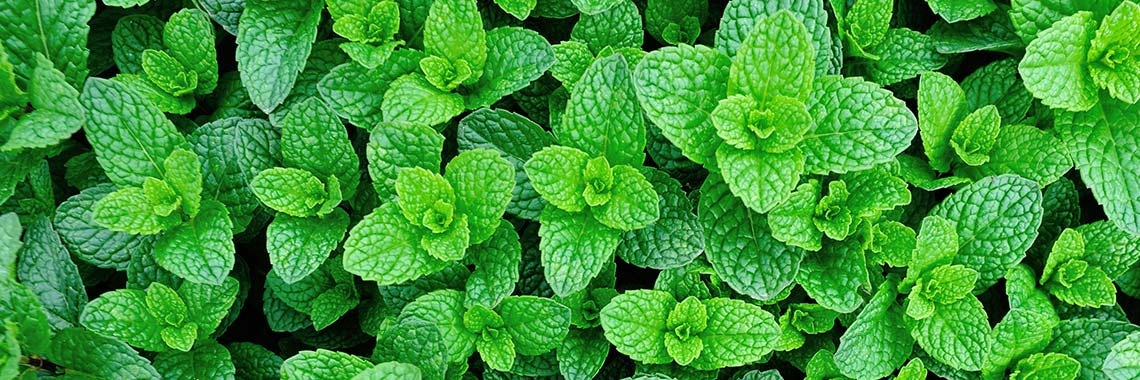
Description
- Mint (Mentha spicata L.) belongs to the Lamiaceae family.
- This family includes over 7,000 plant species. Its largest subfamily, the Nepetoideae, includes many species, including those of the genus Origanum (oregano), Ocimum (basil), Thymus (thyme), Salvia (sage), Lavandula (lavander), Melissa (lemon balm), Rosmarinus (rosemary) and Mentha (mint) (Kennedy, 2018).
- The genus Mentha consists of 25 species (Arumugam, 2006) including spearmint (Mentha spicata L.) and peppermint (M. piperita L.) (Kennedy, 2018).
PHYSICAL AND ORGANOLEPTIC CHARACTERISTICS
- Plants of the Lamiaceae family generally synthesise high concentrations of mono-/sesquiterpenes, volatile compounds with a pleasant fragrance. For plants of the genus Mentha: menthol, menthone, limonene, piperitone and carvone provide them with a minty flavour and odour. These plants also synthesise menthofuran, isomenthone, (E)-caryophyllene, 1,8-cineole, linalool, limonene, piperone and α-terpineol (Kennedy, 2018).
- The aroma of mint is described as “fresh”, “minty” and “herbaceous”, and its taste as “fresh”, “sweet”, “minty” and “slightly spicy” (Vázquez-Fresno, 2019).
- The most abundant compound in spearmint oil is carvone, which gives spearmint its distinctive odour, followed by significant amounts of limonene, dihydrocarvone and 1,8-cineole (Vázquez-Fresno, 2019).
- However, the drying of mint leads to a decrease in floral notes and increase in “minty” odour (Diaz-Maroto, 2003).
COMPOSITION CHARACTERISTICS (excluding macronutrients, vitamins and minerals)
- Mint is a particularly important source of phenolic compounds, such as eugenol, caffeic acid, rosmarinic acid (Arumugam, 2006). Moreover, it is the plant that contains the highest concentration of rosmarinic acid among the plants of the Lamiaceae family (Shekarchi, 2012).
- Thanks to these phenolic compounds, and in particular rosmarinic acid, mint is reported to have beneficial properties on memory, in particular for people with age-related memory problems. A consumption of 900 mg/day of mint is thought to improve the quality of working memory and the accuracy of spatial working memory, the ability to fall asleep, alertness and mood disturbance (Herrlinger, 2018).
- The active constituents of mint are various flavonoids (diosmin, diosmetin), phenolic acids and lignans (Vázquez-Fresno, 2019)
FRESH
The following values are approximate and depend on variety, season, ripeness, cultivation conditions, etc.
On average, mint provides 57.60 calories (kcal) per 100 g, i.e. 240 kJ. However, it is used as a flavouring so such a quantity is rarely consumed. Therefore, a 5 g portion of mint contains 2.88 calories (kcal), i.e. 12 kJ.
COMPOSITION TABLES
For each nutrient, the tables provide information on the content and the minimum and maximum values for 100 g of fresh mint, while the percentage of the Dietary Reference Values (DRVs) is calculated for a 5 g portion.
MACRONUTRIENTS
| Constituent (g) |
Average content
per 100g |
Min-Max per 100g |
Average content
per 5g |
DRV% * |
|---|---|---|---|---|
| Water | 82,1 | 78,70 - 85,60 | 4,11 | - |
| Fibers | 7,40 | 6,80 - 8 | 0,37 | - |
| Carbohydrates | 5,30 | - | 0,27 | 0,10 |
| Sugars | 5,30 | - | 0,27 | 0,29 |
| Lipids | 0,84 | 0,73 - 0,94 | 0,04 | 0,06 |
| Saturated fat | 0,22 | 0,19 - 0,25 | 0,01 | 0,06 |
| Protein | 3,52 | 3,29 - 3,75 | 0,18 | 0,35 |
| Constituent (g) | Amount | Min-Max | DRV% |
|---|---|---|---|
| Water | Ciqual 2020 | - | - |
| Fibers | Ciqual 2020 | - | - |
| Carbohydrates | Ciqual 2020 | - | Règlement (UE) N°1169/2011 du parlement Européen et du conseil du 25 octobre 2011 |
| Sugars | Ciqual 2020 | - | Règlement (UE) N°1169/2011 du parlement Européen et du conseil du 25 octobre 2011 |
| Lipids | Ciqual 2020 | - | Règlement (UE) N°1169/2011 du parlement Européen et du conseil du 25 octobre 2011 |
| Saturated fat | Ciqual 2020 | - | Règlement (UE) N°1169/2011 du parlement Européen et du conseil du 25 octobre 2011 |
| Protein | Ciqual 2020 | - | Règlement (UE) N°1169/2011 du parlement Européen et du conseil du 25 octobre 2011 |
Zoom on carbohydrates
- For a 5 g serving, mint contains 0.27 g of carbohydrates.
- This amount corresponds to 5.30 g per 100 g. It is below the average amount found in aromatic herbs: about 7.85 g per 100 g.
Zoom on fibres
- Mint contains 7.40 g of fibre per 100 g of herbs.
- For one serving of mint (5 g), the amount of fibre is 0.37 g.
Zoom on proteins
- For a 5 g serving, mint contains 0.18 g of protein.
- The protein content of 100 g of mint (3.52 g per 100 g) is lower than the average amount for aromatic herbs (4.22 g per 100 g).
Zoom on lipids
- Fresh mint contains 0.04 g of fat for a 5 g serving.
- This quantity corresponds to 0.84 g of fat per 100 g, which is lower than the average amount found in aromatic herbs (1.18 g per 100 g).
- Mint is low in fat* as it contains no more than 3 g per 100 g.
*Regulation (EC) No 1924/2006 of the European Parliament and of the Council of 20 December 2006 on nutrition and health claims made on foods.
MINERALS AND TRACE ELEMENTS
| Constituent |
Average content
per 100g |
Min-Max per 100g |
Average content
per 5g |
DRV% * |
|---|---|---|---|---|
| Calcium (mg) | 221 | 199 - 243 | 11,05 | 1,38 |
| Chloride (mg) | - | - | - | - |
| Copper (mg) | 0,28 | 0,24 - 0,33 | 0,01 | 1,40 |
| Iron (mg) | 8,48 | 5,08 - 11,90 | 0,42 | 3,03 |
| Iodine (µg) | - | - | - | - |
| Magnesium (mg) | 71,50 | 63 - 80 | 3,58 | 0,95 |
| Manganese (mg) | 1,15 | 1,12 - 1,18 | 0,06 | 2,88 |
| Phosphorus (mg) | 66,50 | 60 - 73 | 3,33 | 0,48 |
| Potassium (mg) | 514 | 458 - 569 | 25,70 | 1,29 |
| Selenium (µg) | 0,50 | - | 0,03 | 0,05 |
| Sodium (mg) | 30,50 | 30 - 31 | 1,53 | - |
| Zinc (mg) | 1,10 | 1,09 - 1,11 | 0,06 | 0,55 |
| Constituent | Amount | Min-Max | DRV% |
|---|---|---|---|
| Calcium (mg) | Ciqual 2020 | - | Règlement (UE) N°1169/2011 du parlement Européen et du conseil du 25 octobre 2011 |
| Chloride (mg) | Ciqual 2020 | - | Règlement (UE) N°1169/2011 du parlement Européen et du conseil du 25 octobre 2011 |
| Copper (mg) | Ciqual 2020 | - | Règlement (UE) N°1169/2011 du parlement Européen et du conseil du 25 octobre 2011 |
| Iron (mg) | Ciqual 2020 | - | Règlement (UE) N°1169/2011 du parlement Européen et du conseil du 25 octobre 2011 |
| Iodine (µg) | Ciqual 2020 | - | Règlement (UE) N°1169/2011 du parlement Européen et du conseil du 25 octobre 2011 |
| Magnesium (mg) | Ciqual 2020 | - | Règlement (UE) N°1169/2011 du parlement Européen et du conseil du 25 octobre 2011 |
| Manganese (mg) | Ciqual 2020 | - | Règlement (UE) N°1169/2011 du parlement Européen et du conseil du 25 octobre 2011 |
| Phosphorus (mg) | Ciqual 2020 | - | Règlement (UE) N°1169/2011 du parlement Européen et du conseil du 25 octobre 2011 |
| Potassium (mg) | Ciqual 2020 | - | Règlement (UE) N°1169/2011 du parlement Européen et du conseil du 25 octobre 2011 |
| Selenium (µg) | Ciqual 2020 | - | Règlement (UE) N°1169/2011 du parlement Européen et du conseil du 25 octobre 2011 |
| Sodium (mg) | Ciqual 2020 | - | - |
| Zinc (mg) | Ciqual 2020 | - | Règlement (UE) N°1169/2011 du parlement Européen et du conseil du 25 octobre 2011 |
Zoom on minerals and trace elements
For one portion of mint (5 g), the minerals and trace elements are present in quantities representing less than 4% of DRVs.
VITAMINS
| Constituent |
Average content
per 100g |
Min-Max per 100g |
Average content
per 5g |
DRV% * |
|---|---|---|---|---|
| Provitamin A Beta-carotene (µg) | 740 | - | 37 | - |
| Vitamin A equivalent (µg) | 123,33 | - | 6,17 | 0,77 |
| Vitamin B1 (mg) | 0,08 | 0,078 - 0,082 | 0 | 0,36 |
| Vitamin B2 (mg) | 0,22 | 0,18 - 0,27 | 0,01 | 0,79 |
| Vitamin B3 (mg) | 1,33 | 0,95 - 1,71 | 0,07 | 0,42 |
| Vitamin B5 (mg) | 0,29 | 0,25 - 0,34 | 0,01 | 0,24 |
| Vitamin B6 (mg) | 0,14 | 0,13 - 0,16 | 0,01 | 0,50 |
| Vitamin B9 (µg) | 110 | 105 - 114 | 5,50 | 2,75 |
| Vitamin C (mg) | 22,60 | 13,30 - 31,80 | 1,13 | 1,41 |
| Vitamin E (mg) | 5 | - | 0,25 | 2,08 |
| Vitamin K1 (µg) | - | - | - | - |
| Constituent | Amount | Min-Max | DRV% |
|---|---|---|---|
| Provitamin A Beta-carotene (µg) | Ciqual 2020 | - | - |
| Vitamin A equivalent (µg) | Calcul à partir de la valeur Provitamine A Béta-carotène* | - | Règlement (UE) N°1169/2011 du parlement Européen et du conseil du 25 octobre 2011 |
| Vitamin B1 (mg) | Ciqual 2020 | - | Règlement (UE) N°1169/2011 du parlement Européen et du conseil du 25 octobre 2011 |
| Vitamin B2 (mg) | Ciqual 2020 | - | Règlement (UE) N°1169/2011 du parlement Européen et du conseil du 25 octobre 2011 |
| Vitamin B3 (mg) | Ciqual 2020 | - | Règlement (UE) N°1169/2011 du parlement Européen et du conseil du 25 octobre 2011 |
| Vitamin B5 (mg) | Ciqual 2020 | - | Règlement (UE) N°1169/2011 du parlement Européen et du conseil du 25 octobre 2011 |
| Vitamin B6 (mg) | Ciqual 2020 | - | Règlement (UE) N°1169/2011 du parlement Européen et du conseil du 25 octobre 2011 |
| Vitamin B9 (µg) | Ciqual 2020 | - | Règlement (UE) N°1169/2011 du parlement Européen et du conseil du 25 octobre 2011 |
| Vitamin C (mg) | Ciqual 2020 | - | Règlement (UE) N°1169/2011 du parlement Européen et du conseil du 25 octobre 2011 |
| Vitamin E (mg) | Ciqual 2020 | - | Règlement (UE) N°1169/2011 du parlement Européen et du conseil du 25 octobre 2011 |
| Vitamin K1 (µg) | Ciqual 2020 | - | Règlement (UE) N°1169/2011 du parlement Européen et du conseil du 25 octobre 2011 |
Zoom on vitamins
- The vitamins are present in mint in quantities of less than 3% of DRVs for a 5 g portion.
* Calculation made: Beta-Carotene / 6 + retinol
POLYPHENOLS
| Constituent (mg) |
Average content
per 100mg |
Min-Max per 100mg |
Average content
per 5mg |
|---|---|---|---|
| Total polyphenols | 246,9 | 94 - 399,80 | 12,35 |
| Constituent (mg) | Amount | Min-Max |
|---|---|---|
| Total polyphenols | Phenol-Explorer 3.6- Méthode utilisée : Folin assay | - |
Zoom on polyphenols
- Polyphenols are substances with an antioxidant effect.
- According to the Folin assay, fresh mint contains a significant amount of polyphenols.
Nutrition and health claims
According to the definitions of nutrition claims as set out in Regulation (EC) No 1924/2006 on nutrition and health claims, and in view of the composition of mint, the following claims may be used:
NUTRITION CLAIMS OF MINT
- Low in fat (100 g of mint contain less than 3 g of fat)
References
- Agence nationale de sécurité sanitaire de l’alimentation, de l’environnement et du travail. Table de composition nutritionnelle des aliments Ciqual 2020. Consultée le 26/08/2020 depuis le site internet Ciqual https://ciqual.anses.fr/
- Arumugam P, Ramamurthy P, Santhiya ST, Ramesh A. Antioxidant activity measured in different solvent fractions obtained from Mentha spicata Linn.: an analysis by ABTS*+ decolorization assay. Asia Pac J Clin Nutr. 2006;15(1):119-24.
- Díaz-Maroto MC, Pérez-Coello MS, González Viñas MA, Cabezudo MD. Influence of drying on the flavor quality of spearmint (Mentha spicata L.). J Agric Food Chem. 2003;51(5):1265-9.
- Herrlinger KA, Nieman KM, Sanoshy KD, Fonseca BA, Lasrado JA, Schild AL, et al. Spearmint Extract Improves Working Memory in Men and Women with Age-Associated Memory Impairment. Journal of Alternative and Complementary Medicine. 2018;24(1): 37–47.
- Kennedy D, Okello E, Chazot P, Howes M-J, Ohiomokhare S, Jackson P, et al. Volatile Terpenes and Brain Function: Investigation of the Cognitive and Mood Effects of Mentha × Piperita L. Essential Oil with In Vitro Properties Relevant to Central Nervous System Function. Nutrients. 2018;10: 1029.
- Neveu V, Perez-Jiménez J, Vos F, Crespy V, du Chaffaut L, Mennen L, Knox C, Eisner R, Cruz J, Wishart D, Scalbert A. (2010) Phenol-Explorer: an online comprehensive database on polyphenol contents in foods. Database, doi: 10.1093/database/bap024. Full text (free access)
- Règlement (CE) N° 1924/2006 du Parlement européen et du Conseil du 20 décembre 2006 concernant les allégations nutritionnelles et de santé portant sur les denrées alimentaires.
- Règlement (UE) N°432/2012 de la Commission du 16 mai 2012 établissant une liste des allégations de santé autorisées portant sur les denrées alimentaires, autres que celles faisant référence à la réduction du risque de maladie ainsi qu’au développement et à la santé infantiles.
- Règlement (UE) n°1169/2011 du Parlement européen et du Conseil du 25 octobre 2011 concernant l’information des consommateurs sur les denrées alimentaires, modifiant les règlements (CE) n°1924/2006 et (CE) n°1925/2006 du Parlement européen et de Conseil et abrogeant la directive 87/250/CEE de la Commission, la directive 90/496/CEE du Conseil, la directive 1999/10/CE de la Commission, la directive 200/13/CE du Parlement européen et du Conseil, les directives 2002/67/CE et 2008/5/CE de la Commission et le règlement (CE) n°608/2004 de la Commission.
- Shekarchi M, Hajimehdipoor H, Saeidnia S, Gohari AR, Hamedani MP. Comparative study of rosmarinic acid content in some plants of Labiatae family. Pharmacogn Mag. 2012;8(29):37-41.
- Vázquez-Fresno R, Rosana ARR, Sajed T, Onookome-Okome T, Wishart NA, Wishart DS. Herbs and Spices- Biomarkers of Intake Based on Human Intervention Studies – A Systematic Review. Genes & Nutrition. 2019;14: 18.




